
Dictionnaire amoureux du Louvre - Art Lover’s Dictionary of the Louvre
Pierre Rosenberg was the president-director of the Louvre Museum between 1994 and 2001, and well-known throughout the world as the most distinguished specialist of paintings and drawings, particularly of the XVIIth and XVIIIth century.
He is offering us an outstanding guided tour through this majestic art palace - the Louvre.
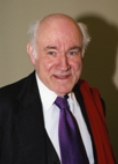
Pierre Rosenberg’s Art Lover’s Dictionary of The Louvre is a « monumental work », one might say : 957 pages dealing with this immense and venerable institution. One can only be but deeply impressed as one consults it. Indeed, this work is a result of incredible amount of reflexion, experience, erudition and also humour to explore the world of the Louvre.
This "Louvre dictionary” is "like discovering or re-discovering generations of artists and works of art with an indiscrete eye".
So page after page, we’ll make our way through this temple of art and all the figures and history surrounding it.
We’ll learn all about probably the heart of the book :
A - the HISTORY of the LOUVRE MUSEUM
Today the Louvre is a museum, but this wasn't always so the case…
(for instance during the French Revolution (originally the Louvre was a Palace), Dominique Vivant-Denon, the first “director” during Napoleon’s times, the Louvre during the Second World War, and all the difficulties in connection with the evacuation of the masterpieces outside the city).
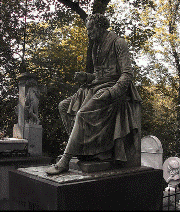
Other items are revealed to us by Pierre Rosenberg, such as :
- the famous PYRAMIDE built by the not less famous american-chinese architect Ieoh Ming PEI, and the controversy or the Battle of the Pyramide ;
- What is the Louvre’s relationship with other important museums ? For instance, with the Musée d’Orsay in Paris or the National Gallery in London ?
- Another controversy about the Louvre and the Abou Dabi project. What is Pierre Rosenberg’s point of view in this matter ?
After a first short break, we’ll listen to a chapter of French History related to the Louvre. As it is said, "the Louvre is a time machine and by taking just a few steps there you walk through centuries".
The History of Art is of course deeply involved with French history.
B - FRENCH HISTORY
For instance with the letter L, we find a succession of Kings from Louis XIIIth to Louis XVIth and certainly Louis XIVth… Pierre Rosenberg will help us refresh our memory.
We’ll then pursue our History lesson through this LOUVRE DICTIONARY and look at :
- the ARCH of TRIUMPH of the CARROUSEL. (Here you’ll find a whole section of French History, starring such famous figures as Marie-Antoinette amongst others…)
- some comments on the APPOLLO GALLERY, newly and magnificently restored, certainly the most beautiful gallery besides the Hall of Mirrors in Versailles, in the XVIIIth century (it was 60m long and 10m large).
After a second short break, Pierre Rosenberg presents us some of the Great Masters of the history of art.
C – Great MASTERS of the HISTORY of ART
He’ll guide us through the fabulous galleries to comment some of the paintings he cherishes particularly, the Galleries of the French XVIIth and XVIIIth century. Among the immense choice of works, we selected
some of his favourites, like :
- Nicolas POUSSIN (1594 – 1665)
Les Bergers d’Arcadie (The shepherds of Arcady)
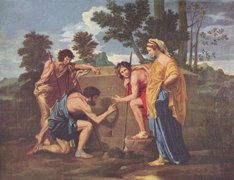
Autoportrait (Self-Portrait)
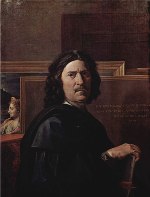
- Georges de LA TOUR (1593 – 1652)
La diseuse de bonne aventure -(The Fortune Teller)
- Philippe de CHAMPAIGNE( 1602 – 1674)
Le Cardinal Richelieu (Cardinal Richelieu)
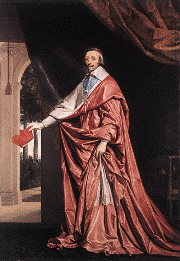
And of the XVIIIth century :
- Jean-Antoine WATTEAU (1684 – 1721).
Pèlerinage à l’île de Cythère (Pilgrimage to the island of Cythera)
- Jean-Baptise Siméon CHARDIN (1699 – 1779)
La raie (The skate)
Le Bénédicité
- Jean-Honoré FRAGONARD (1732 – 1806)
Le Verrou (The bolt), reproduced on the cover of the Dictionnary
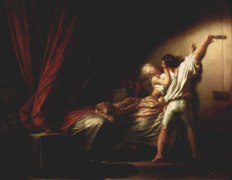
Obviously, time is too short to visit the other galleries of the Italian School, or the Dutch or German ones.
One last question about an issue that is very important to the former President-Director of the Louvre : The teaching of the history of art in schools. He says that if "the school teaches us how to read, it does not teach us how to see". We’d need a school that would familiarize us with the artistic treasures of the past. He expressed this wish to Nicolas Sarkozy who included it in his election program.
What are the latest news about this very interesting project ?
The Art Lover's Dictionary of the Louvre is absolutely fascinating. You open it on whatever page, and you most probably go on to other issues, other names, other stories – in fact, you can read it like a novel. It will certainly delight art amateurs as well as neophytes to art.
The book Dictionnaire Amoureux du Louvre, has been published by Plon, Nov. 2007
About Pierre Rosenberg
- Other programs in French with Pierre Rosenberg on Canal Académie :
- Les Fragonard de Besançon, avec Pierre Rosenberg, de l’Académie française
- Le fabuleux destin de Dominique-Vivant Denon (1747-1825)
- Les cent plus beaux tableaux des États-Unis selon Pierre Rosenberg
- Sous le regard de Goethe, commenté par Pierre Rosenberg
- Homepage of the Louvre Museum
Poussin and the Nature, Metropolitan Museum of Art, New York, February to May 2008, here